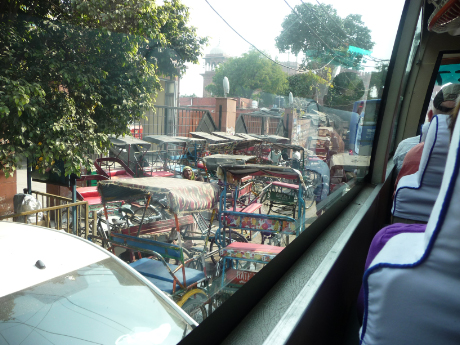 |
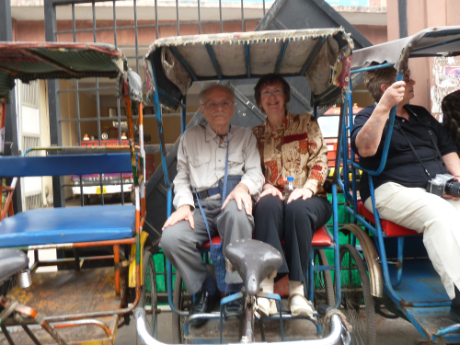 |
| The first challenge in visiting India is getting around. We travelled mostly by bus, which made it easy on us but hard on Mr. Singh, our indefatigable bus driver. The streets are incredibly crowded and no one pays any attention at all to lanes, signals, or rules. It could easily take an hour to get to a place only a few miles away. |
In order to see some of the smaller, more picturesque streets in Delhi we took a bicycle rickshaw ride. This can best be described as Mr. Toad's Wild Ride as our driver squeezed into spaces where there was no space and used his bell frequently to open a path. |
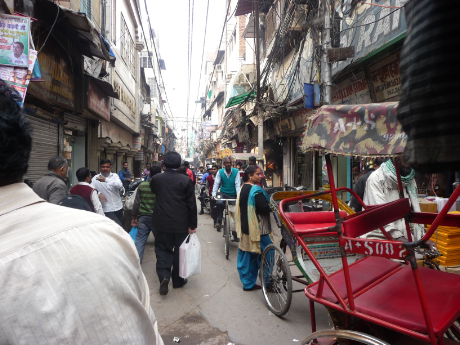 |
 |
| All kinds of vehicles and pedestrians clogged the narrow streets of the old town. | On the slightly wider roads around the marketplace it was not much better, since there were even larger vehicles to deal with. |
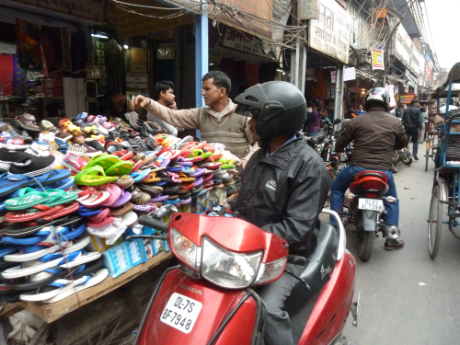 |
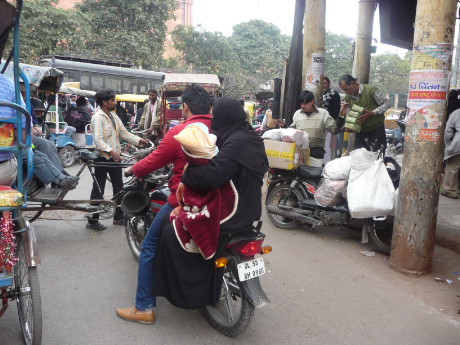 |
Scooters and motorcycles were generally the vehicle of choice and went anywhere and everywhere. Smart merchants had wares laid out in drive-up displays. |
Whole families travelled on one motorcycle, the women riding side-saddle holding the little ones for dear life. |
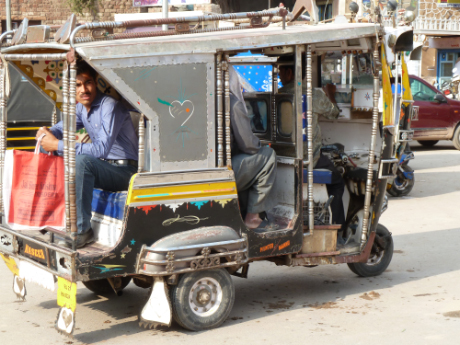 |
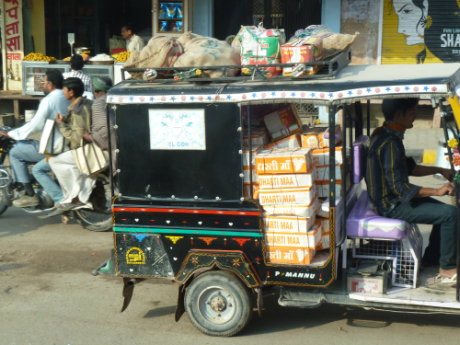 |
| If you didn't have a motorcycle or scooter, there were thousands of these little three-wheel, gas-powered taxis available, especially in the smaller cities. Most were lavishly decorated by their proud owners. |
Since large trucks could not negotiate the small streets of most towns, these small vehicles also served as the primary delivery method. |
 |
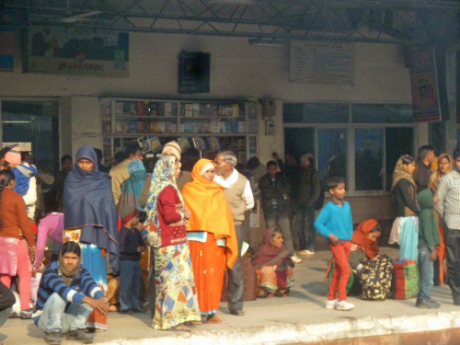 |
| Sometimes there were so many of them, like at this train station, that there was complete gridlock. |
Trains are THE method for middle- and long-distance travel. Many women travel alone; some trains have special cars for them. Station platforms are rife with people offering shoe shines, zipper repair (for pants or luggage), food and drink, haircuts, etc. |
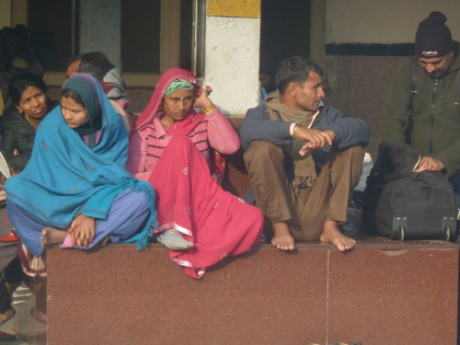 |
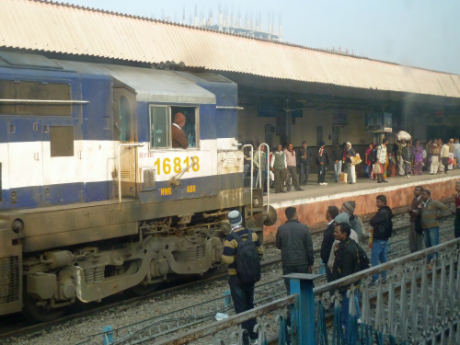 |
| Because hotels cost money that most people do not have, some would wait hours, even overnight, for their next train. |
When the train came close to the station we saw a bunch of men hop off the platform and wait on the other side of the tracks. When the train pulled in they entered through the "wrong" doors. The trains are so crowded that it is the best way of assuring that they get on. [We, by the way, travelled in Business Class cars with assigned seats.] |
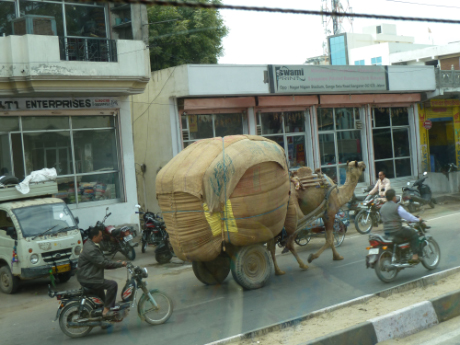 |
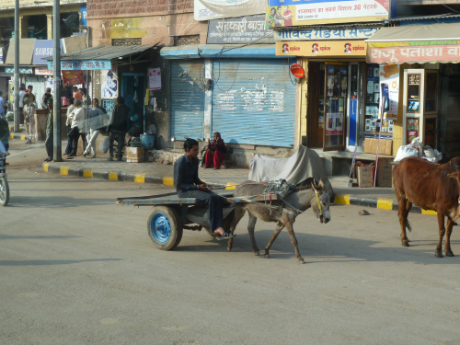 |
| If it has four legs, it probably pulls a cart in India. Camels were very popular as draft animals, as well as being ridden. |
Donkeys were not that common and they seemed to small that you wonder what they could pull. |
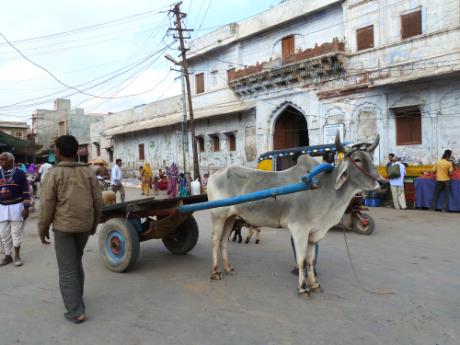 |
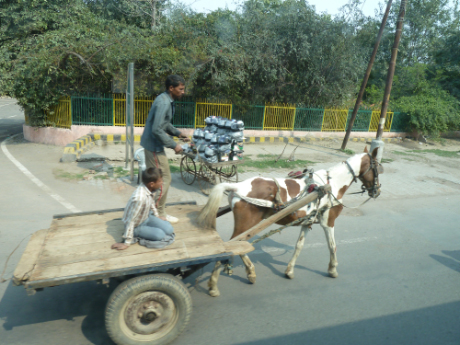 |
| Oxen, of course, are the major draft animals. Although Hindus revere cows, the animals are not pampered idols; they work for their keep. |
Horses also pull their weight. |
 |
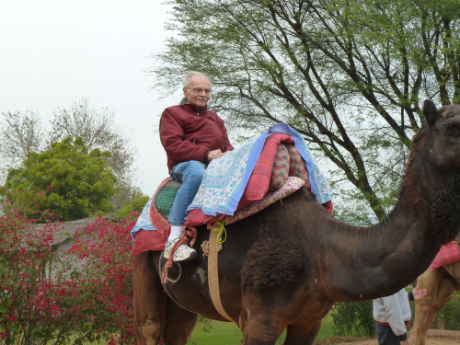 |
| When all else, fails, there is good old-fashioned human muscle power. One notable thing about India is the number of men (and women) we saw lifting and carrying heavy loads on their backs or heads. |
To get yourself to one place or another, in addition to taxis and motorcycles, there are camels. Chuck would have preferred almost any other method of travel. |
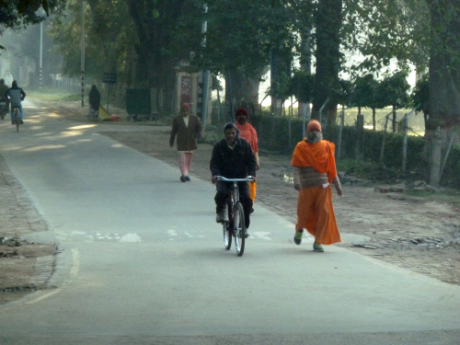 |
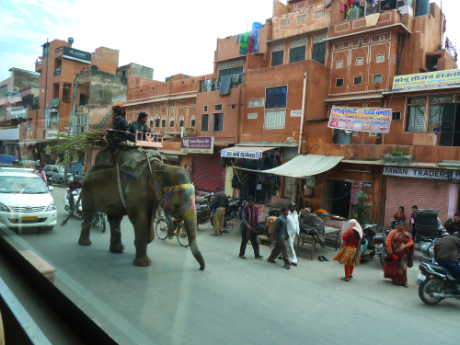 |
| There were lots of bicycles in the cities, although they were at a distinct disadvantage to the motorcycles. The rural roads were safer for them--sort of. |
For the wealthy, there are elephants to ride. No one does this regularly in northern India; this one was probably headed to a wedding. |
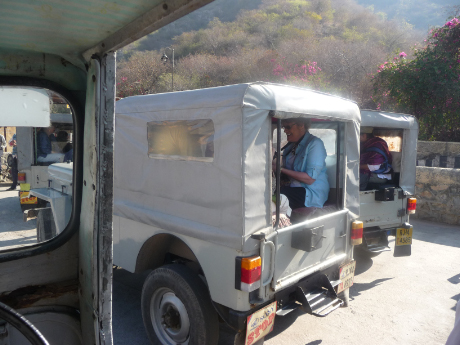 |
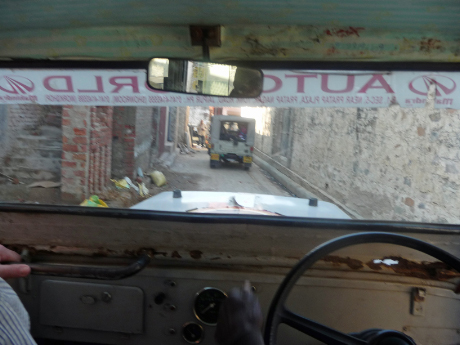 |
| Small four-wheel jeeps are used to get up steep hills, like the one that we encountered at the Man Singh palace. | On the other hand, the Indian version of two-way streets can be a little daunting. Luckily, the jeeps themselves only went one way (usually). |
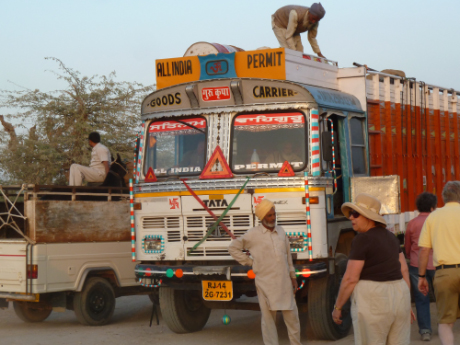 |
 |
| The roads outside the cities are full of large trucks hauling goods. Like the taxis, they are decorated and the vast majority are made by a company called Tata, which has a huge economic presence in Indian transportation (gas, trucks, hotels. etc.) |
If you didn't need a big truck, a smaller one was probably available to move you from one city to the next. |
 |
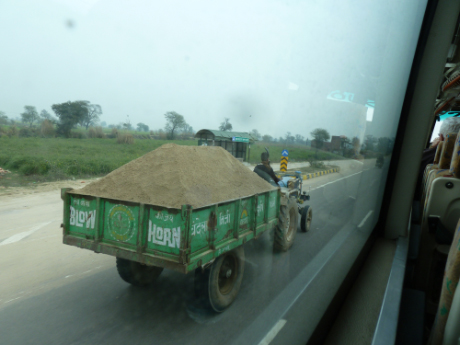 |
| The inter-city highways are, shall we say, a little narrow. | It is customary in India to beep your horn when you are passing someone. While it is a good idea, since many vehicles lack mirrors, it contributes to a deafening cacophony of beeps, bells, and whistles in crowded areas like cities. |
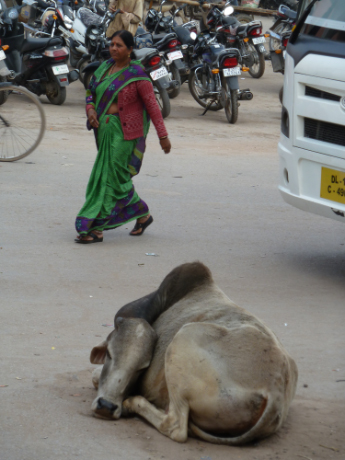 |
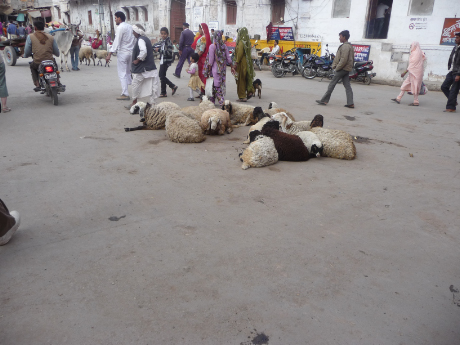 |
| And then there are the particular hazards of driving in India, such as when a cow decides to take a nap in front of your truck. It is OK to shoo it away--if you dare. |
And sometimes a local flock of sheep will decide that it is time for a rest, no matter what their shepherd thinks. |
 |
|
| And of course there is air travel. How could we feel safer than travelling to Nepal on Buddha Air? |
 |
 |
